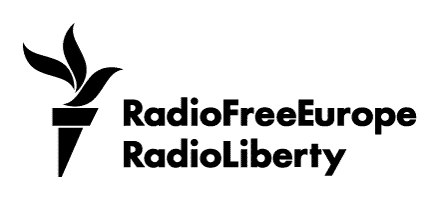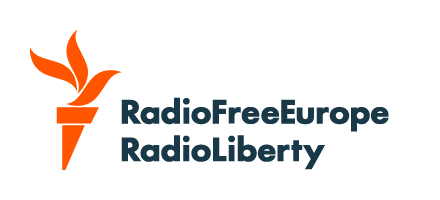The European Union and Central Asian countries have kicked off their first-ever high-level summit as the bloc eyes new trade and infrastructure investments while aiming to significantly elevate Brussels' ties with the region, according to a draft document for the meeting seen by RFE/RL.
"Reaffirming our commitment to deeper cooperation in an evolving global and regional geopolitical landscape, we have decided to upgrade relations between the European Union and Central Asia to a strategic partnership," states a draft EU version of the joint declaration for the April 3-4 summit's intended outcomes.
Beyond strengthening political ties between Brussels and Central Asia, the draft document, which could still be subject to change, outlines deepening the EU's partnership with the region through enhanced cooperation on water management, critical minerals, and a focus on digital connectivity.
As outlined in the draft document, the 27-country bloc also calls for a greater focus on trade and investment and lumping the array of proposed initiatives for Central Asia under the Global Gateway, the EU's infrastructure partnership plan launched in 2021 that's seen as an alternative to China's worldwide Belt and Road Initiative (BRI).
A key part of the Global Gateway's early footprint in Central Asia is the Trans Caspian Transport Corridor (TCTC), also known as the Middle Corridor, a 6,500-kilometer developing trade route that connects China to Europe through Central Asia and the Caucasus by bypassing Russia. The EU document calls for the route to be expanded further.
The summit is something of a watershed moment for the EU as it aims to boost its regional standing at a time when Russia's full-scale invasion of Ukraine has shifted the geopolitical balance in Central Asia and China's economic expansion has left the region more integrated with Beijing.
But analysts say there are still questions in the region about the EU's interest in Central Asia.
"Central Asia wants a bigger EU presence, but the region's leaders don't have high expectations," Temur Umarov, a fellow at the Carnegie Russia Eurasia Center in Berlin, told RFE/RL.
"So far, the EU hasn't put enough money on the table to make them think that Europe can be this third player that allows Central Asia to rely less on Russia and China," he said.
Why Is The EU Looking To Partner With Central Asia?
Since 2023, Western leaders have been flocking to Central Asia on high-level state visits as they've looked to take advantage of the economic and political window opened by Russia's full-scale invasion of Ukraine in February 2022.
While Central Asian governments have maintained strong ties with Moscow, they've also accelerated their efforts to diversify their relations with other countries. This push to woo new partners and deepen preexisting ties has been boosted by the region containing some of the world's largest hydrocarbon reserves and critical raw materials.
The result has been a flurry of diplomatic inroads made by Brussels and individual European states such as France and Germany in recent years. Turkey, the United Arab Emirates, and other Middle Eastern countries have also expanded their presence.
But the region's deepest inroads have been carved out by China. Beijing has established itself as a leading trade partner and top foreign investor in Central Asia, and China hosted its own landmark summit with Chinese leader Xi Jinping and his regional counterparts in 2024.
Bilateral trade between Central Asia and China, its largest individual trade partner, has been rising steadily in recent years, hitting a record high of $94.8 billion in 2024, but with its 27 member states, the EU is Central Asia's biggest foreign investor.
The EU and the five Central Asia states signed a road map for expanding their ties in 2023. This was later followed by an investors forum in 2024 that saw the EU pledge 10 billion euros ($10.8 billion) toward the Middle Corridor trade route.
Can The Global Gateway Compete With China?
The EU's heightened interest in Central Asia is driven in part by its need to secure new energy supplies and gain access to critical minerals but also to help diversify the region away from its historical reliance on Moscow.
Central to these needs are the development of the Middle Corridor and deepening of the Global Gateway's profile.
"One of the core elements of the EU's approach to Central Asia is to develop connectivity to and through this region," Marie Dumoulin, a program director at the European Council on Foreign Relations, told RFE/RL. "Central Asian countries should benefit from the Global Gateway initiative, but concrete projects are slow to materialize and not very visible."
Since the all-out war in Ukraine, the Middle Corridor has attracted new investment and seen the amount of cargo traveling along its roads, railways, and shipping lanes expand after being avoided for years due to rising costs and border issues.
But the trade route is still grappling with limited capacity and bottlenecks at key ports due to a lack of infrastructure, which still holds it back from being an alternative to the traditional Northern Route that takes goods from China through Russia to Europe.
The EU-Central Asia summit in Samarkand is looking to inject new momentum into those initiatives.
Jacob Mardell, a senior fellow at Sinification and the author of a new report about the future of the Global Gateway, says the EU's infrastructure program gives Brussels an opportunity to create more goodwill in Central Asia and become a more visible player on the ground in a way similar to how the BRI allowed China to expand as an investor and create new opportunities for Chinese businesses.
"Global Gateway might not be a direct response to BRI, but it's a response to the changing environment that the BRI created when it challenged the status quo for development finance," Mardell told RFE/RL. "The EU now has a chance to respond."















